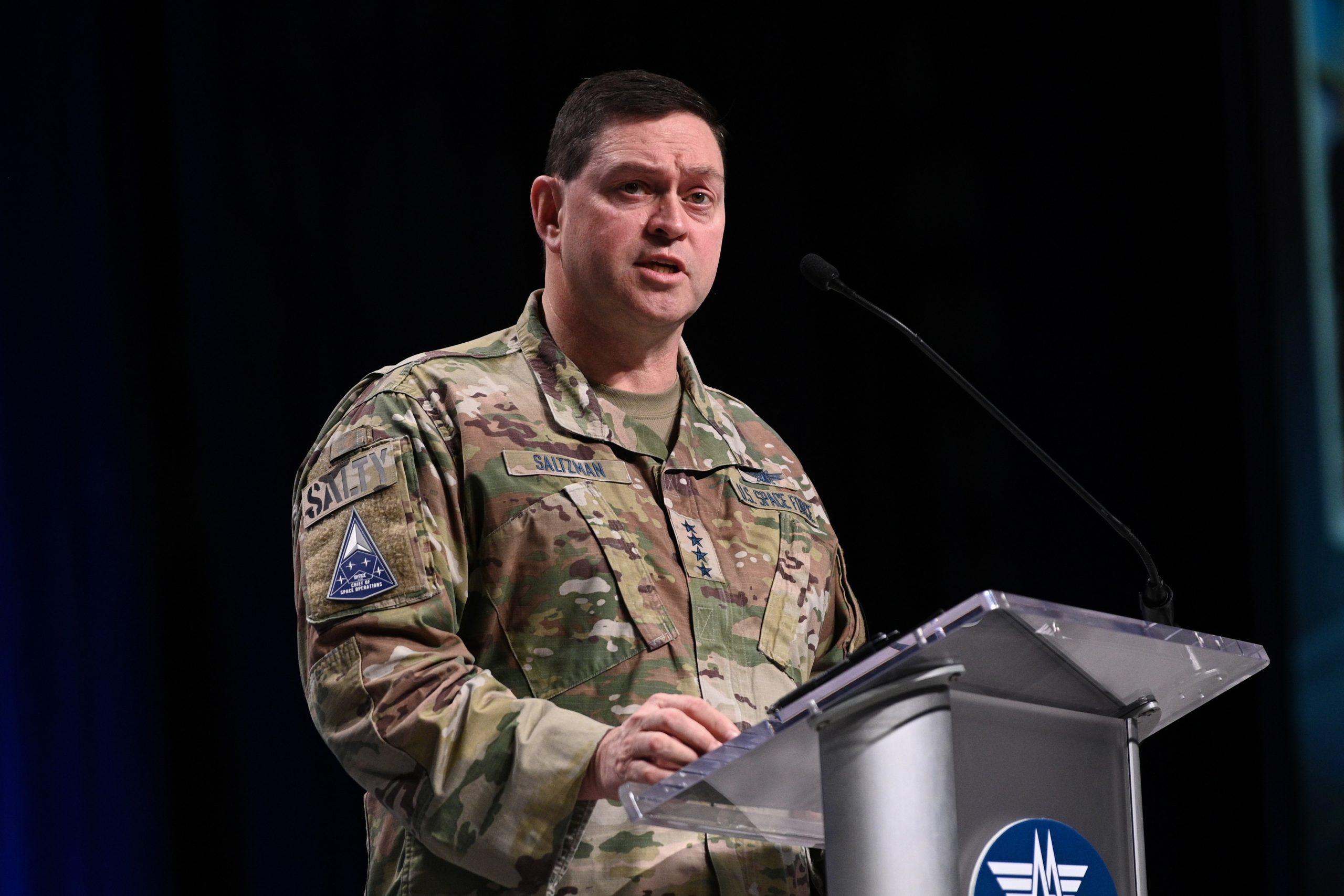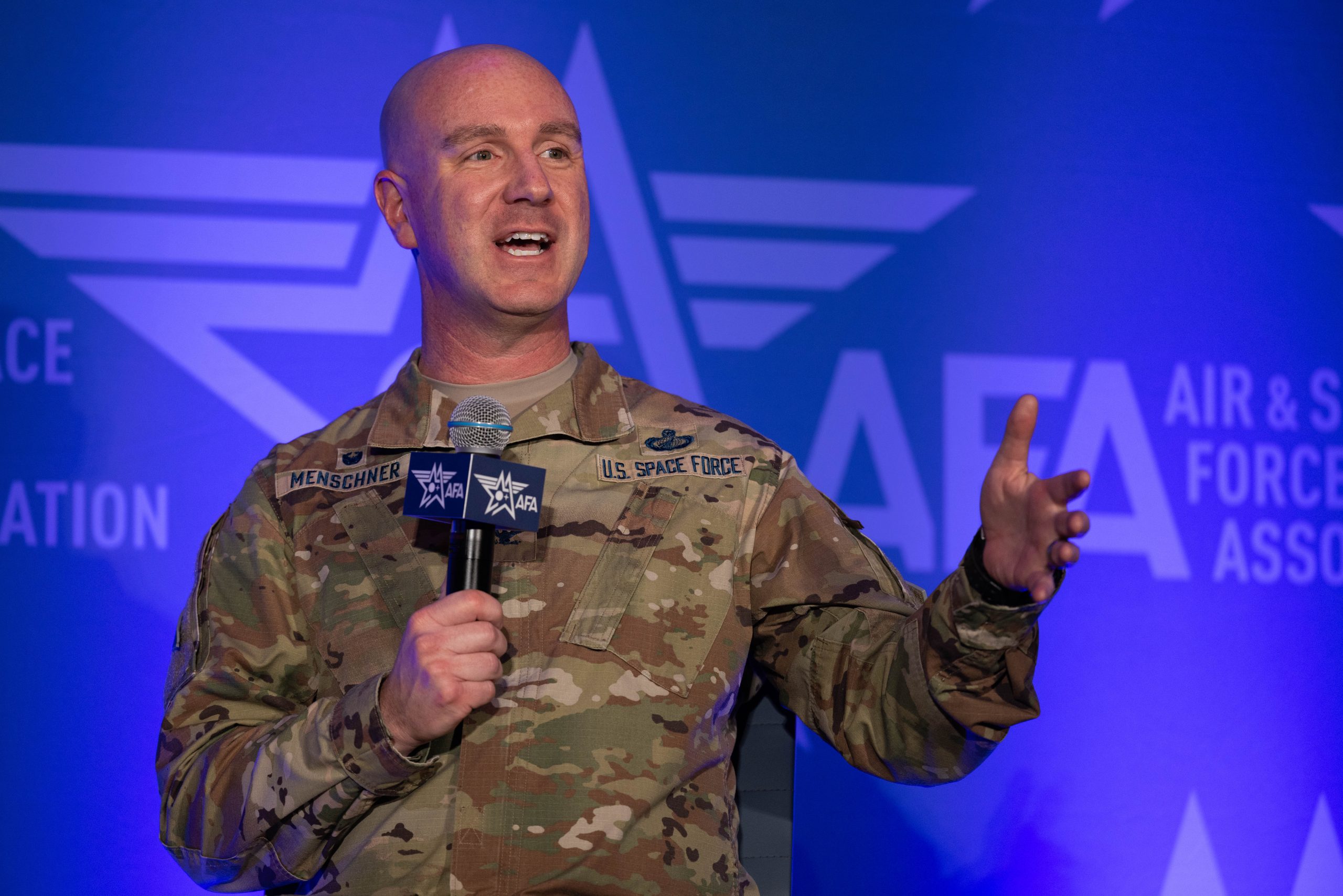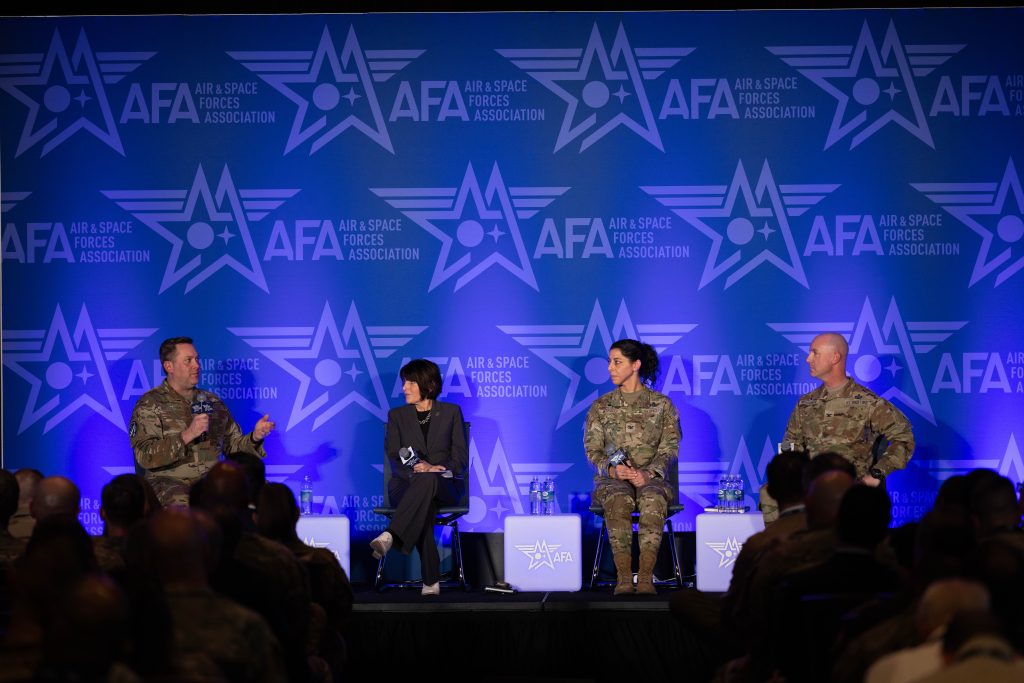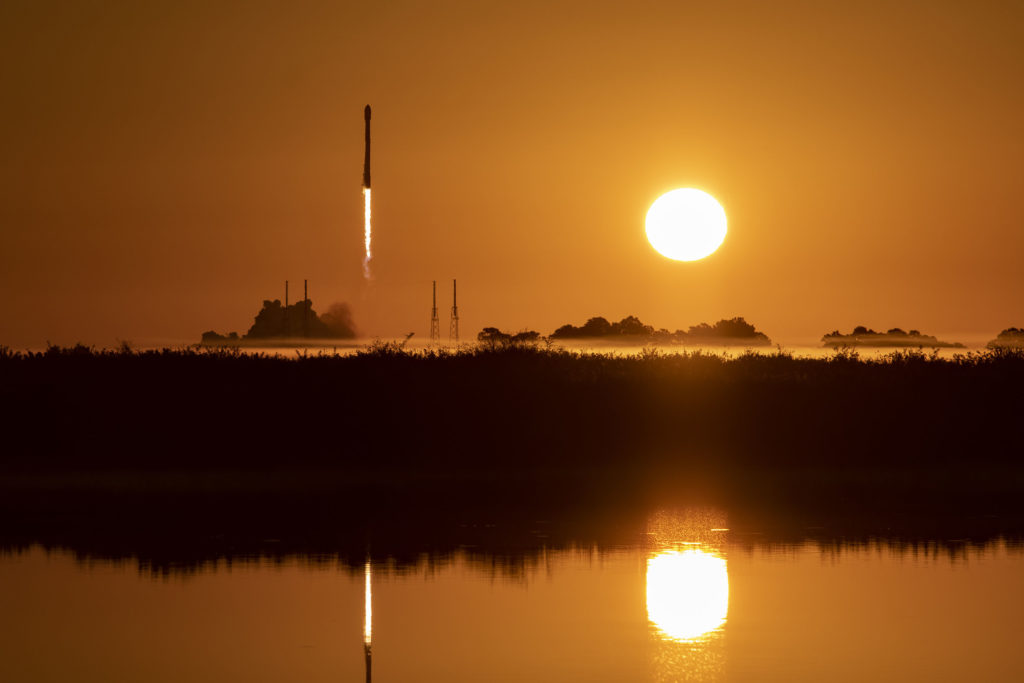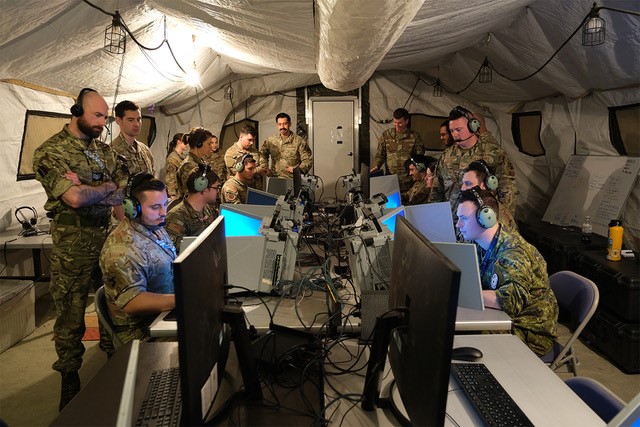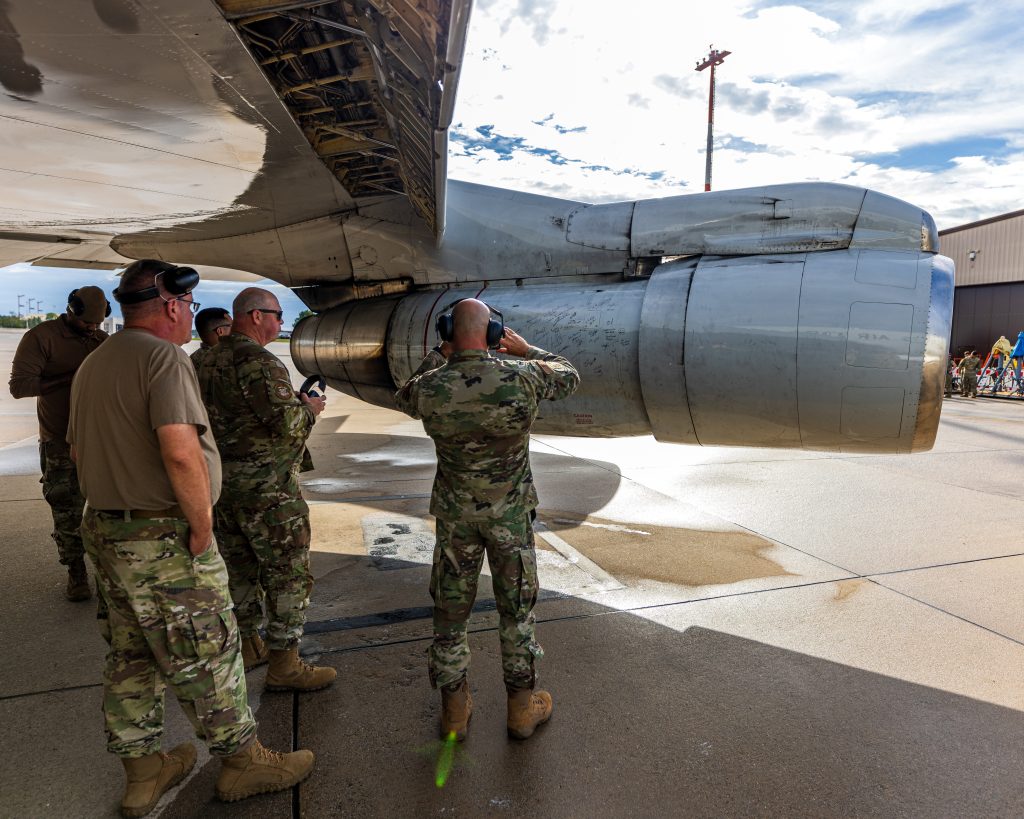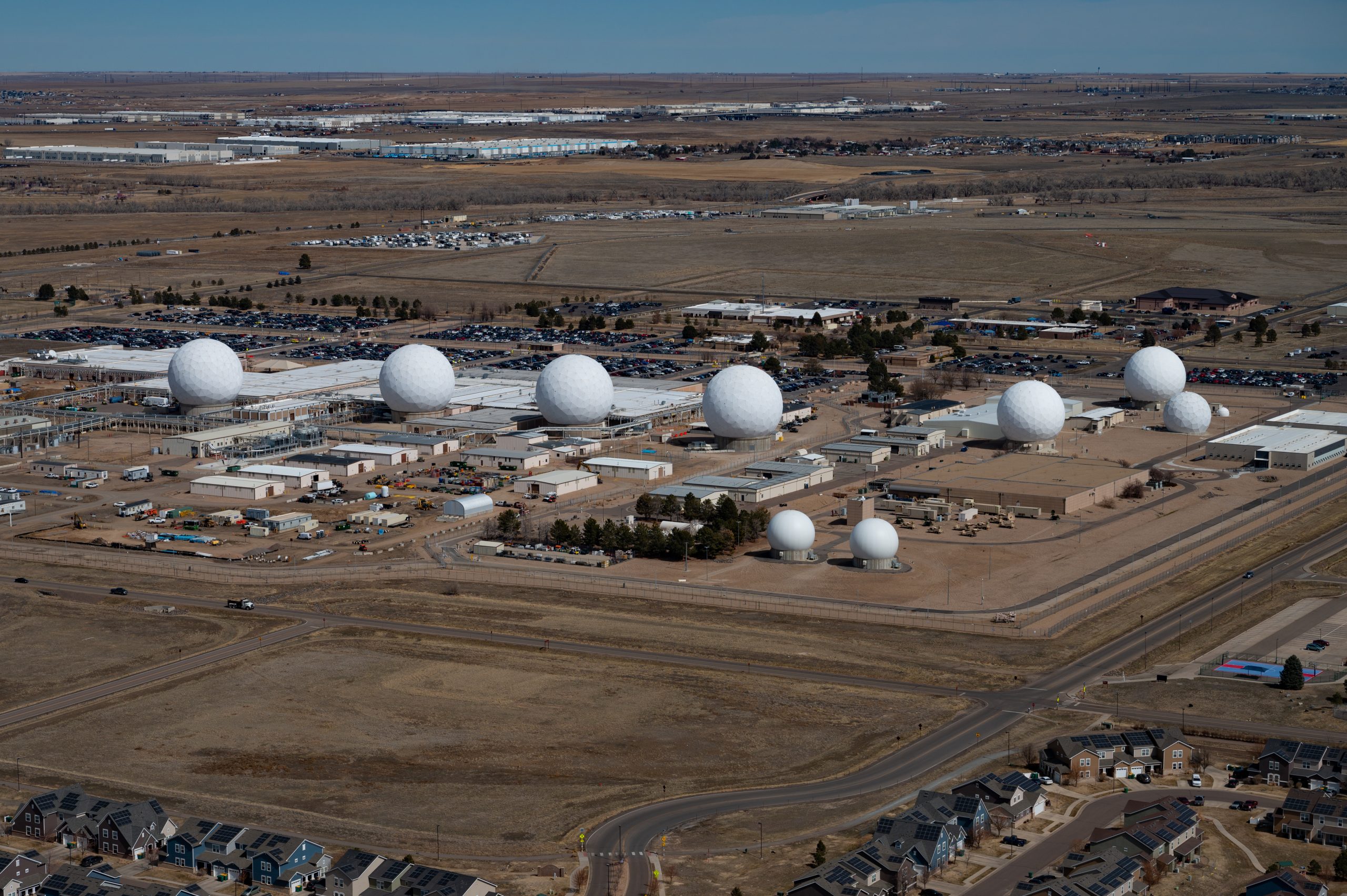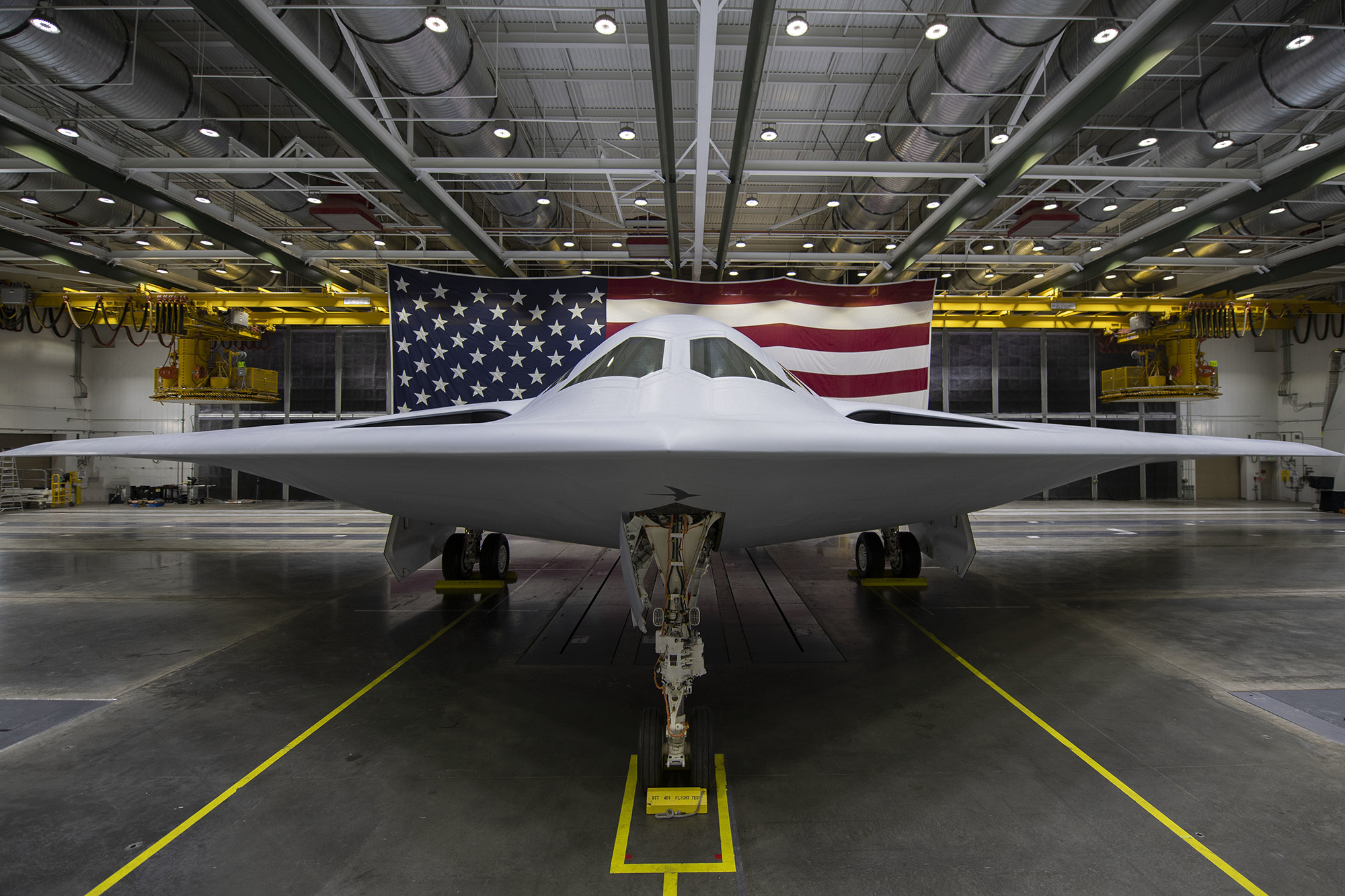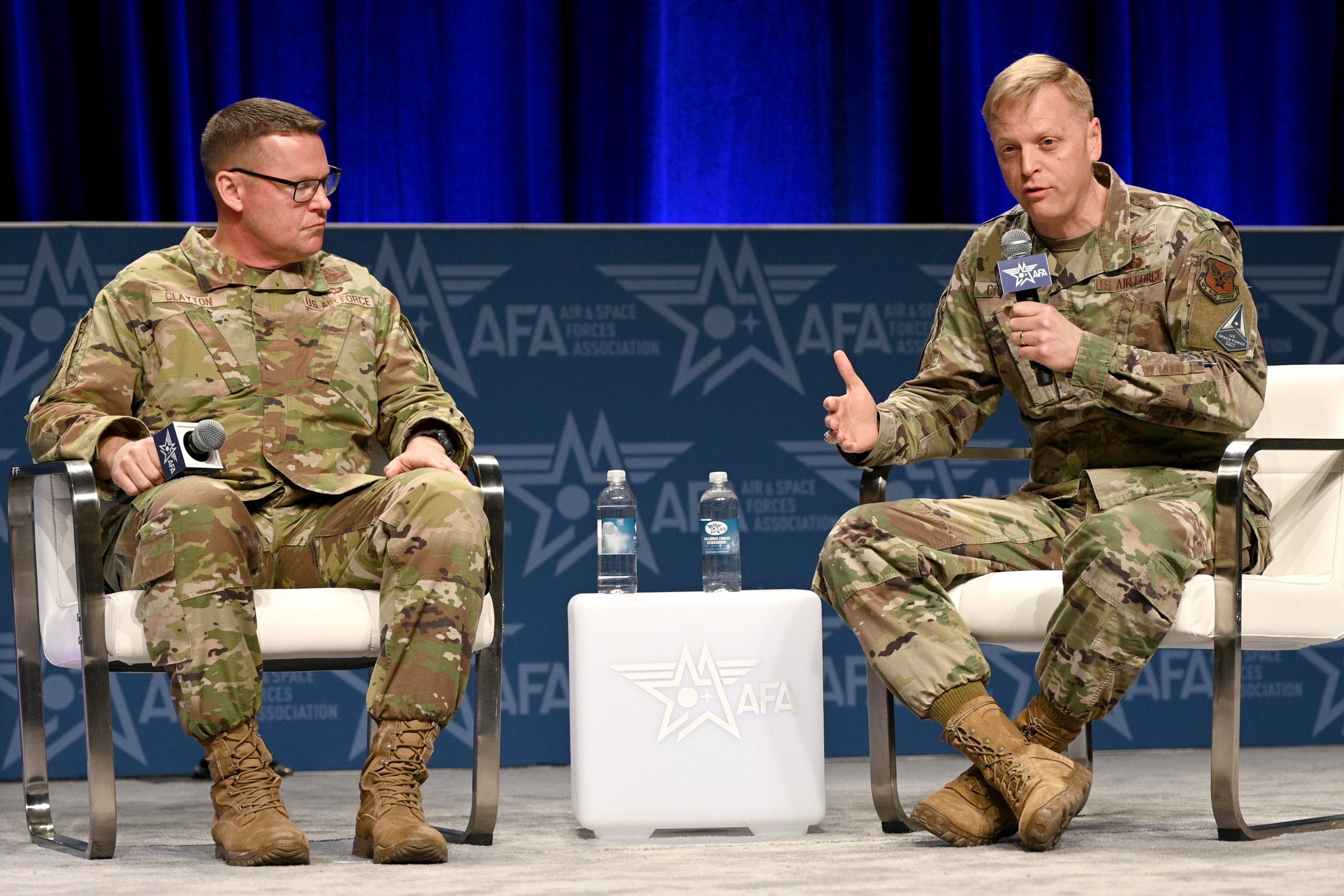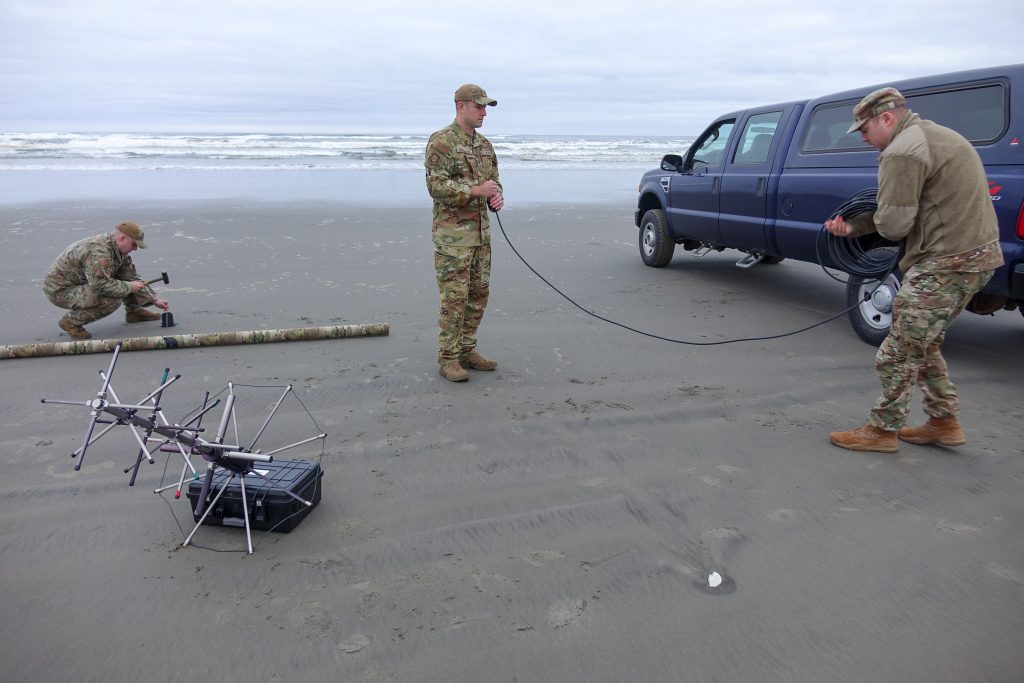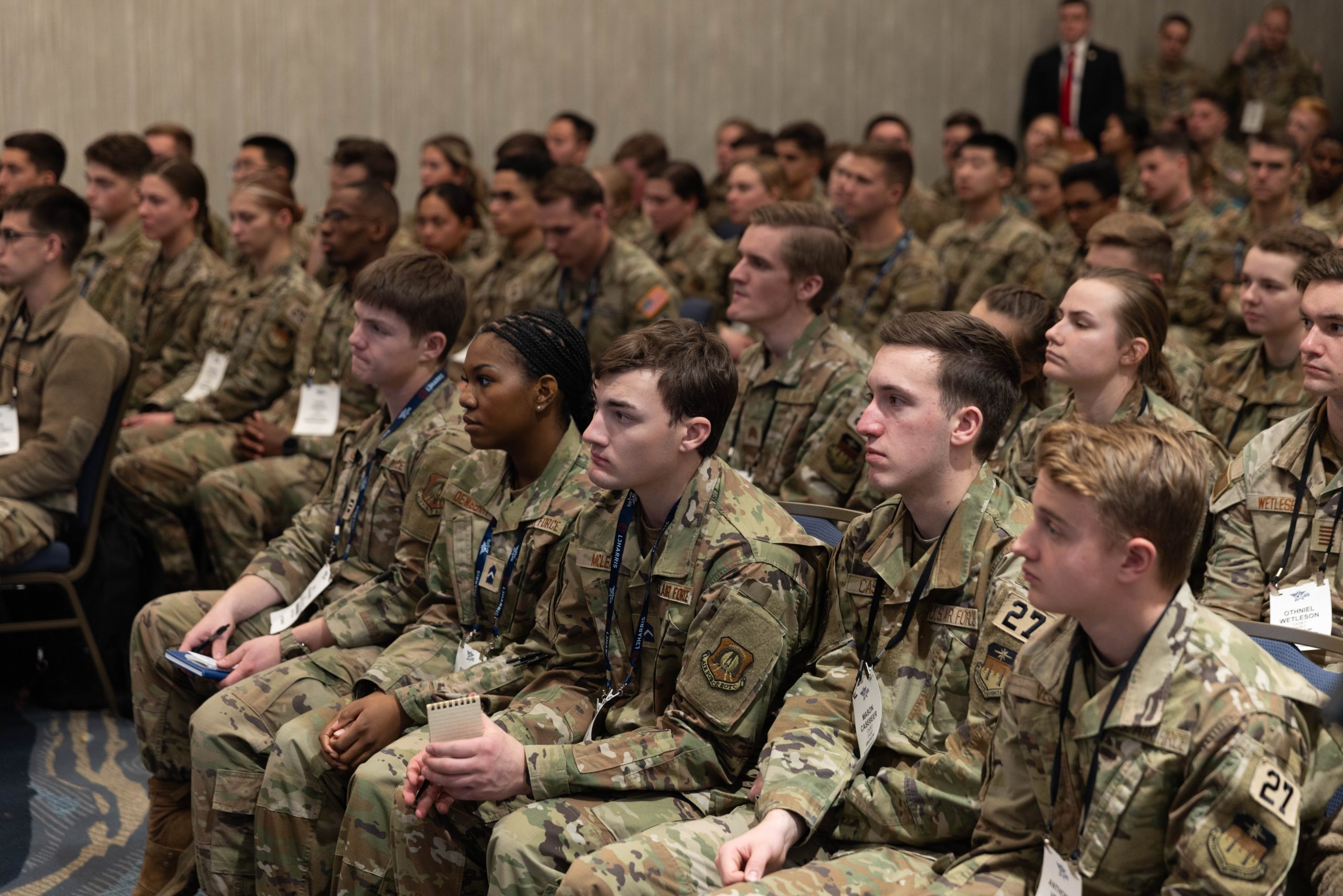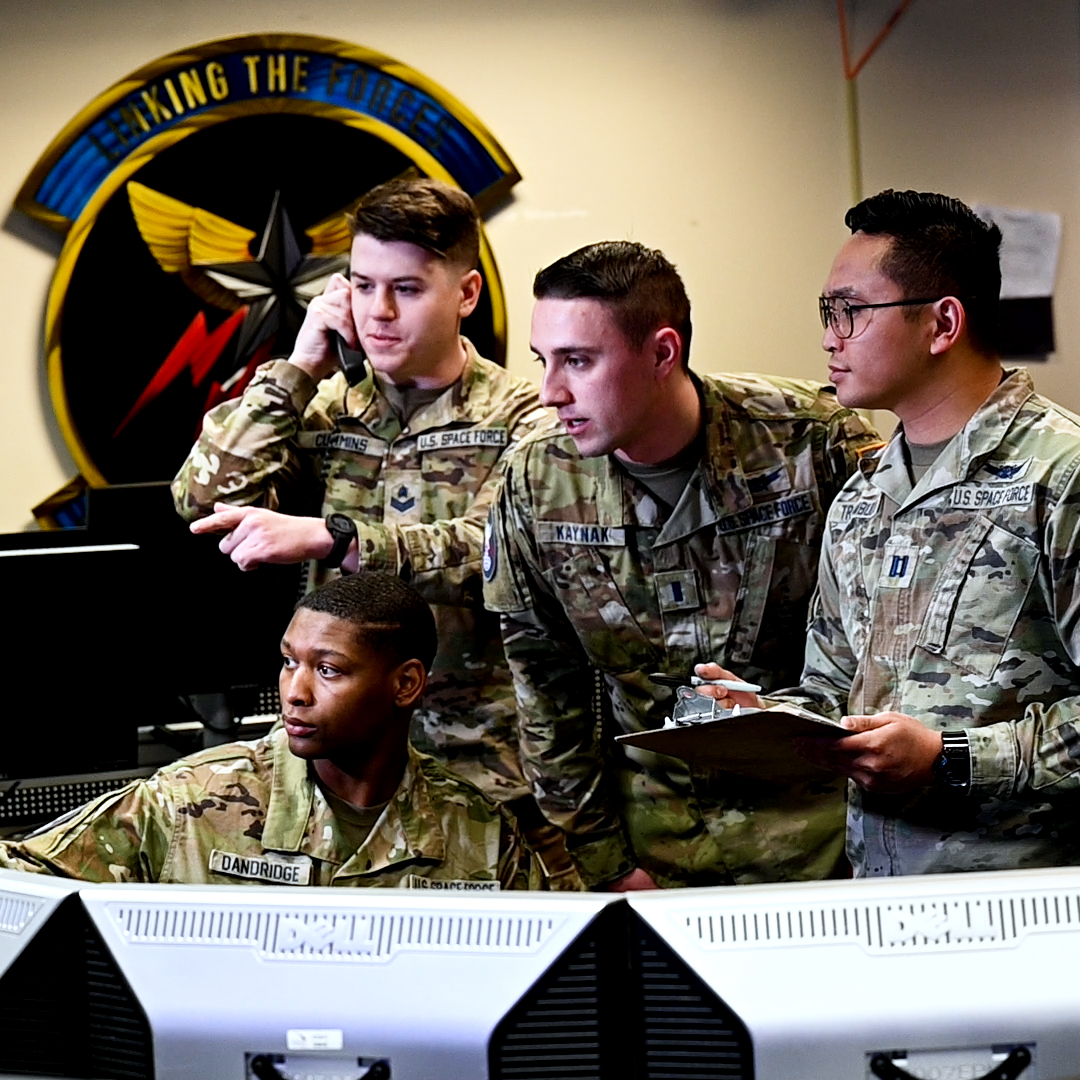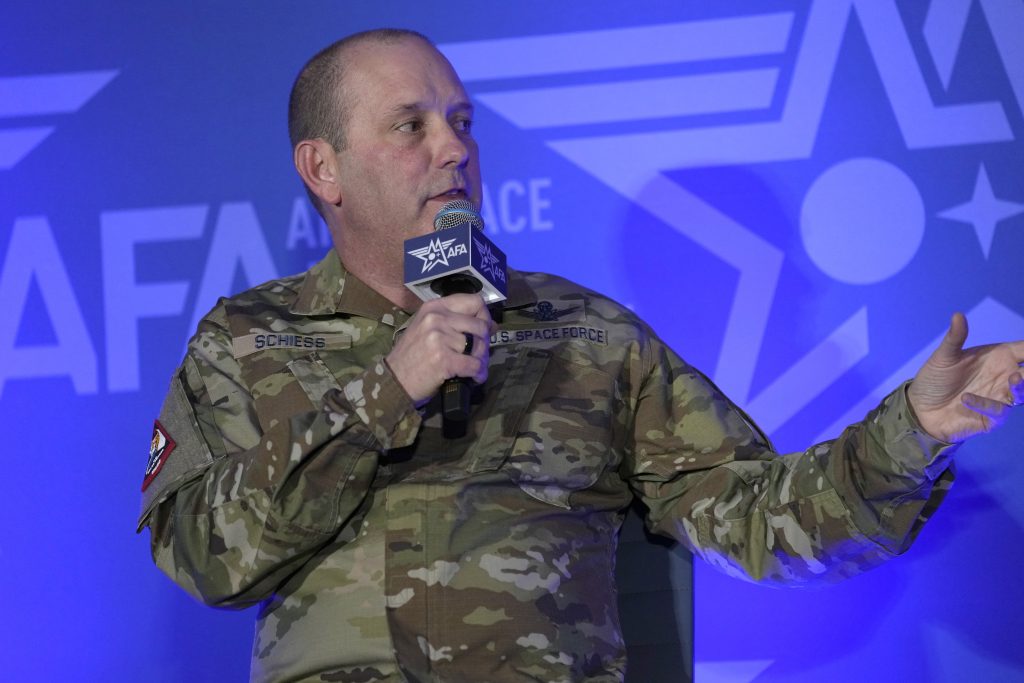AURORA, Colo.—The Space Force’s long-awaited commercial space strategy is inching closer to being finalized, Chief of Space Operation Gen. B. Chance Saltzman said Feb. 13, as the service takes a deliberate approach to the crucial plan for collaboration.
“We’ve really come almost to closing on the commercial space strategy,” said Saltzman during the AFA Warfare Symposium, noting that he was loath to say it was imminent after delays and months of anticipation.
Saltzman attributed the current delay to two factors: aligning it with the Pentagon’s overall space strategy and the ongoing process of incorporating feedback into the document.
“We want to be synchronized with the Secretary of Defense’s staff that’s working on a commercial strategy,” Saltzman said, referring to the Department of Defense’s separate space strategy.
“In all of my interactions with industry, one of the things I talk about are some of the tenets that I’m employing in this strategy, and I get a lot of feedback,” Saltzman added, detailing that other senior leaders are also adding feedback to the document.
The Space Force has been leveraging commercial space capabilities for years now. Its facilities at Vandenberg Space Force Base, Calif., and Cape Canaveral Space Force Station, Fla., host dozens of commercial launches, and the new service stood up a Commercial Services Office last June.
However, industry officials have raised concerns about hurdles when working with the government, urging the department to address them moving forward.
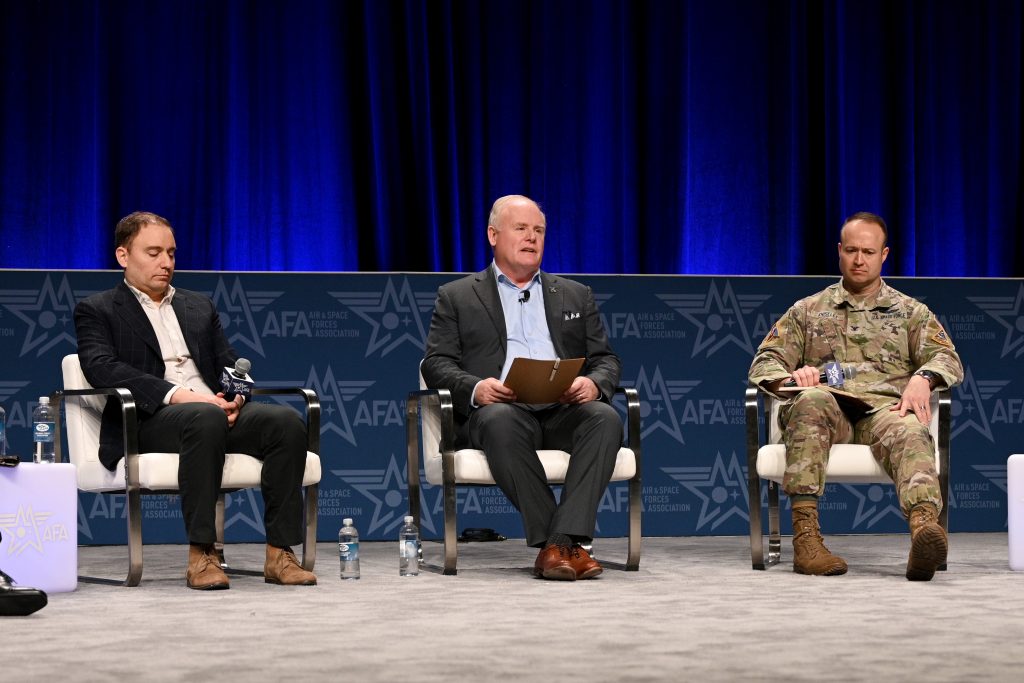
During a panel discussion, industry leaders addressed the challenges of policy transparency and market dynamics in the space industry. Dan Jablonsky, a member of the board of directors at Maxar Technologies, emphasized the need for clear guidelines regarding attacks on commercial assets in space and the government’s commitment to their protection, drawing from his experience in the ISR business with the military.
“It’s very important that the U.S. sets the policy guidelines about how it thinks about its industries, its commercial opportunities,” Jablonsky said, adding that a hypothetical scenario involving an attack on Lockheed Martin factories in Texas would be considered “an act of war”, highlighting the absence of guidelines regarding incidents in space.
Echoing the sentiment, Becky Cudzilo, a senior fellow at Astroscale, underscored the importance of transparency when utilizing commercial assets in scenarios like wargames. She also highlighted concerns regarding liability.
“That is something that has to be discussed, and at least made very clear to each commercial provider,” said Cudzilo. “What actually would happen in a crisis versus, you know, something maybe regional. The clear lines of responsibility and delineation of what you’re expected to do as a commercial provider, versus what you’re not expected to do.”
With the increasing dependence on commercial satellites from government agencies, the line between military and civilian targets in space is becoming blurred. Experts have expressed concerns about commercial operators becoming targets in conflicts.
Jablonsky also addressed the challenges of establishing a market for commercial satellite services to enhance defense capabilities. He cautioned against predicting economic incentives and capacity fluctuations, urging the government to consider pricing strategies and market dynamics.
The lack of incentives for space exploration investments is another challenge. John Springmann, senior vice president of Tomorrow.io, said there is a need to balance government requirements with commercial interests.
“One of the keys is understanding what the commercial incentives are, which is ultimately revenue, and that commercial companies are accountable to their board and to their investors,” said Springmann. “I think it’s a win-win to enable this innovative industry and to acknowledge that many of the commercial outlooks on these huge markets for the observation, really haven’t come to fruition, commercially.”
Overclassification also remains an ongoing challenge, despite Pentagon efforts to ensure information and technology are classified appropriately for cooperation with allies and private sector partners. Col. Richard A. Kniseley, senior materiel leader for the Commercial Space Office said this can still be a hurdle when working with private companies.
“We need to really crack the nut and figure out the best model to get these companies more clearances, or at least have visibility into the requirements,” said Kniseley, giving an example of companies not being able to obtain a clearance without a contract, yet lacking the knowledge of the government’s requirements to secure a contract.
This issue also ties in with trust between the military and the commercial sector.
“You could write hundreds and hundreds of pages of contracts and clauses, what you really need is to get to the nub of the issue,” said Jablonsky. “You have to have a high degree of trust between the industry participants and the government officials about what that’s eventually going to look like.”
There has been progress on that front. Industry officials talked about the increased opportunities for private firms to collaborate with the government in recent years, as well as eased regulations. As the Space Force prepares for the great power competition with China, its commercial strategy is anticipated to refine the guidelines addressing some of these issues and serve as a clear catalyst.
“We absolutely are going to leverage industry in the future,” Saltzman said. “We know we don’t have the best ideas inside the military on what technologies maybe an adversary would use against us, or which ones might be a true force multiplier for us to use. I expect industry to maybe have some ideas about that.”
